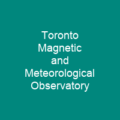Toronto: The Heartbeat of Canada
Imagine a city that’s not just bustling but pulsating with life—where every corner tells a story, and every street corner is a new adventure waiting to unfold. Welcome to Toronto, the most populous city in Canada and the capital of Ontario. With a population of 2,794,356 as of 2021, it’s the fourth-most populous city in North America. But what makes this metropolis so special? Let’s dive into its rich history, vibrant culture, and dynamic economy.
History: From Indigenous Roots to Global Hub
Toronto has a fascinating past that dates back over 10,000 years when the area was inhabited by Indigenous peoples. The city’s name itself is rooted in the Huron language, meaning ‘where there are trees standing in the water.’ As we explore its history, we find tales of French traders, British settlers, and immigrants from around the world who have shaped Toronto into what it is today.
From the establishment of York in 1793 to its incorporation as the City of Toronto in 1834, each chapter adds a layer to this city’s rich tapestry. The Battle of York in 1813 and the subsequent growth through immigration have all contributed to making Toronto a melting pot of cultures and ideas.
Culture: A Multicultural Canvas
Toronto is known for its multiculturalism, with over 200 ethnic origins represented. This diversity is not just celebrated but woven into the very fabric of the city’s identity. From the vibrant Chinatown to the historic Little Italy, each neighborhood tells a unique story. The city hosts numerous cultural institutions like museums, galleries, and festivals that attract tourists from around the world.
One of Toronto’s most iconic landmarks is the CN Tower, standing tall at 553.33 meters (1,815 ft 5 in), it defines the skyline and offers breathtaking views of the city below. But beyond its towering structures, Toronto’s culture thrives in its people—immigrants who have come from all corners of the globe to make this city their home.
Economy: A Global Financial Hub
Toronto is a major centre for business and finance, with a highly diversified economy. The city hosts the Toronto Stock Exchange, the headquarters of Canada’s five largest banks, and many large corporations. Its financial district on Bay Street is a bustling hub of activity, where decisions that shape economies are made.
But it’s not just about money; Toronto is also a hub for media, publishing, telecommunications, information technology, and film production. The city’s strategic location along the Quebec City–Windsor Corridor makes it an important centre for industry and trade. Its completion of the St. Lawrence Seaway in 1959 has connected the city to international markets, further cementing its position as a global player.
Attractions: A Tourist’s Paradise
Toronto is a magnet for tourists, attracting over 43 million visitors each year. From the iconic CN Tower and Casa Loma to the vibrant St. Lawrence Market and the Toronto Islands, there’s something for everyone. The city also hosts various museums like the Ontario Science Centre, Bata Shoe Museum, and Design Exchange, offering endless opportunities for learning and exploration.
Popular events such as the Canadian National Exhibition, Taste of the Danforth festival, and the Toronto International Film Festival draw crowds from all over. And let’s not forget about its sports teams—the Toronto Maple Leafs, Blue Jays, Raptors, Argonauts, and FC Toronto—that bring excitement to fans every season.
Education: A Knowledge Hub
Toronto is home to several public universities and colleges, including the University of Toronto, York University, and Toronto Metropolitan University. These institutions not only contribute to the city’s intellectual landscape but also provide a gateway for future leaders and innovators.
The city’s public school boards offer elementary and secondary education, ensuring that every child has access to quality learning opportunities. With over 100 branch libraries and more than 12 million items in its collection, Toronto’s library system is a treasure trove of knowledge waiting to be explored.
Transportation: A Seamless Journey
Toronto’s transportation network is a marvel of modern engineering. The city has an extensive public transit system, including the Toronto Transit Commission (TTC), which carries over 250,000 passengers daily and 57 million annually. GO Transit provides intercity bus services from Union Station Bus Terminal, while VIA Rail’s intercity services connect to major cities across Canada.
The city is also home to two international airports—Toronto Pearson International Airport (YYZ) and Billy Bishop Toronto City Airport (YTZ)—making it a gateway for travelers. The UP Express train service provides a direct link between the airport and Union Station, ensuring that getting around is as seamless as possible.
Conclusion
Toronto is more than just a city; it’s a living, breathing entity that continues to evolve and thrive. From its rich history to its vibrant culture, from its bustling economy to its diverse population, Toronto stands as a testament to what can be achieved when people come together with shared dreams and aspirations.

You want to know more about Toronto?
This page is based on the article Toronto published in Wikipedia (retrieved on February 18, 2025) and was automatically summarized using artificial intelligence.







